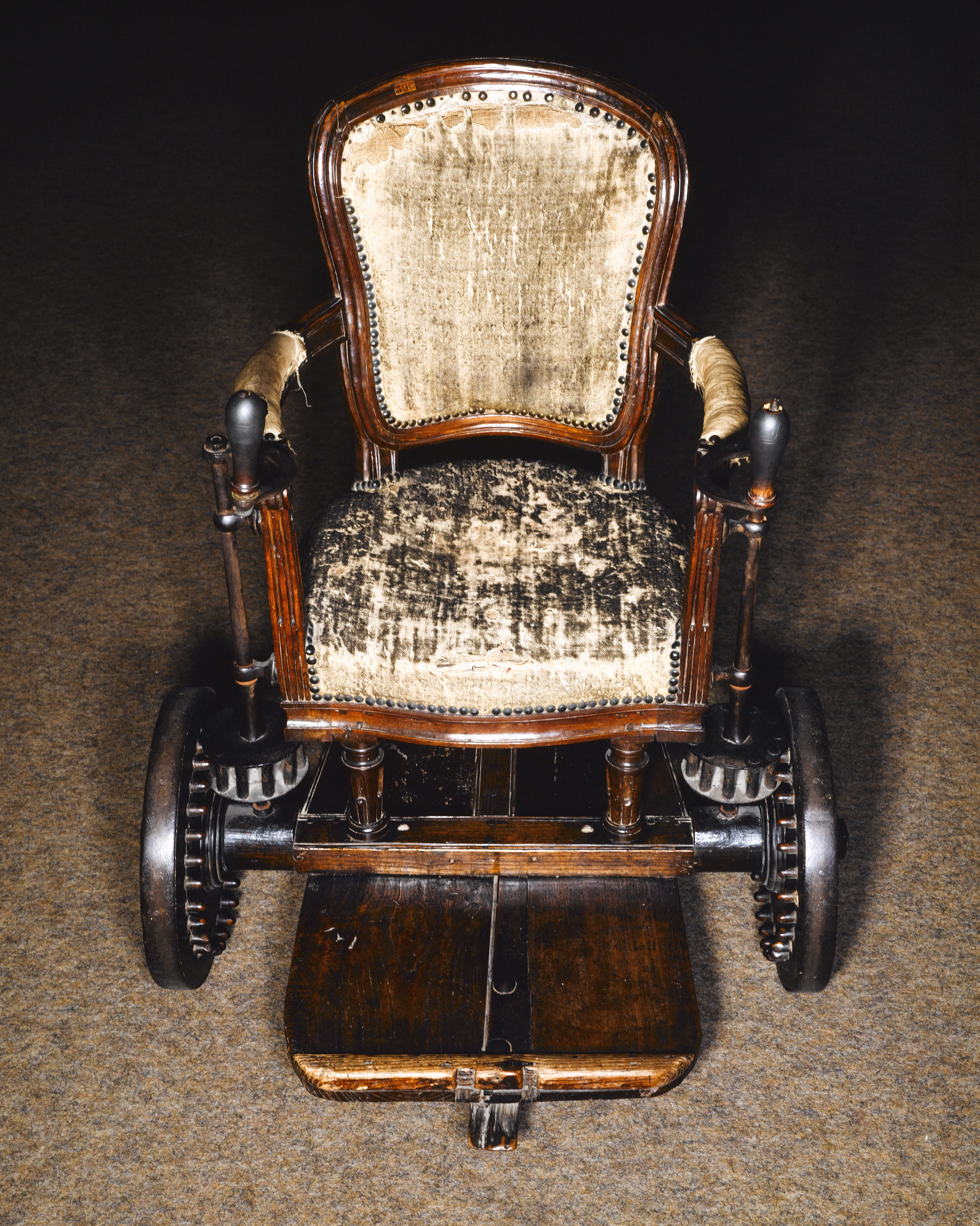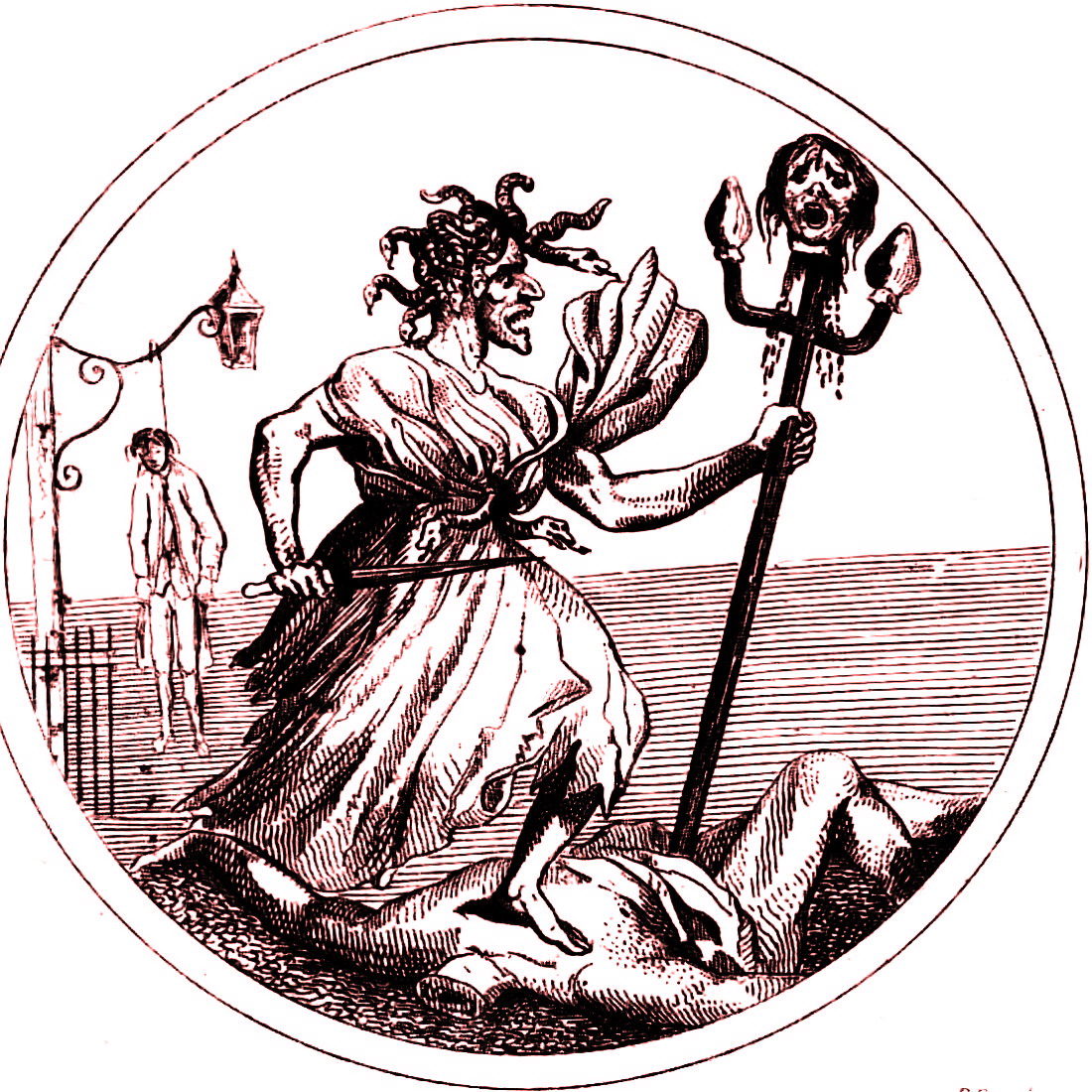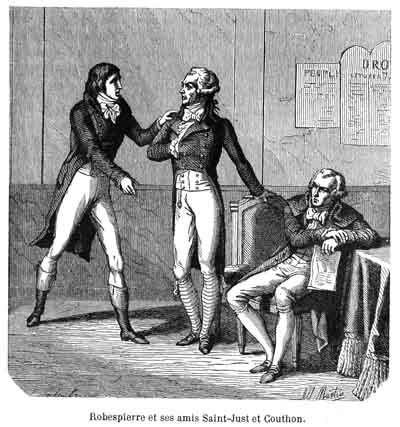|
Couthon
Georges Auguste Couthon (, 22 December 1755 – 28 July 1794) was a French politician and lawyer known for his service as a deputy in the Legislative Assembly (France), Legislative Assembly during the French Revolution. Couthon was elected to the Committee of Public Safety on 30 May 1793. Along with his close associate Louis Antoine de Saint-Just and Maximilien Robespierre, he formed an unofficial triumvirate within the committee which wielded power during the Reign of Terror until the three were arrested and executed in 1794 during the Thermidorian Reaction. A Freemasonry in France, Freemason, Couthon played an important role in the development of the Law of 22 Prairial, which was responsible for a sharp increase in the number of executions of accused counter-revolutionaries. Background Couthon was born on 22 December 1755 in Orcet in the province of Auvergne. His father was a notary, and his mother was the daughter of a shopkeeper. Couthon, like generations of his family bef ... [...More Info...] [...Related Items...] OR: [Wikipedia] [Google] [Baidu] |
Maximilien Robespierre
Maximilien François Marie Isidore de Robespierre (; ; 6 May 1758 – 28 July 1794) was a French lawyer and statesman, widely recognised as one of the most influential and controversial figures of the French Revolution. Robespierre fervently campaigned for the voting rights of universal manhood suffrage, all men and their unimpeded admission to the National Guard (France), National Guard. Additionally, he advocated the right to petition, the right to bear arms in self-defence, and the abolition of the Atlantic slave trade. A radical Jacobin leader, Robespierre was elected as a deputy to the National Convention in September 1792, and in July 1793, he was appointed a member of the Committee of Public Safety. Robespierre faced growing disillusionment due in part to the politically motivated violence associated with him. Increasingly, members of the Convention turned against him, and accusations came to a head on 9 Thermidor. Robespierre was arrested and with around 90 othe ... [...More Info...] [...Related Items...] OR: [Wikipedia] [Google] [Baidu] |
Committee Of Public Safety
The Committee of Public Safety () was a committee of the National Convention which formed the provisional government and war cabinet during the Reign of Terror, a violent phase of the French Revolution. Supplementing the Committee of General Defence, created early January 1793, the Committee of Public Safety was created on 6 April 1793 by the National Convention. It was charged with protecting the new republic against its foreign and domestic enemies, fighting the First Coalition and the Vendée revolt. As a wartime measure, the committee was given broad supervisory and administrative powers over the armed forces, judiciary and legislature, as well as the executive bodies and ministers of the convention. As the committee, restructured in July, raised the defense ('' levée en masse'') against the monarchist coalition of European nations and counter-revolutionary forces within France, it became more and more powerful. In December 1793, the Convention formally conferred executi ... [...More Info...] [...Related Items...] OR: [Wikipedia] [Google] [Baidu] |
Law Of 22 Prairial
The Law of 22 Prairial, also known as the ''loi de la Grande Terreur'', the law of the Great Terror, was enacted on 10 June 1794 (22 Prairial of the Year II under the French Revolutionary Calendar). It was proposed by Georges Auguste Couthon but seems to have been written by Maximilien Robespierre according to Laurent Lecointre. Using this law, the Committee of Public Safety simplified the judicial process to one of indictment and prosecution. Background The immediate background to the introduction of the Prairial Law was the attempted assassinations of Jean-Marie Collot d'Herbois on 23 May and of Maximilien Robespierre on 25 May. Introducing the decree at the Convention, Georges Couthon, who had drafted it, argued that political crimes were far worse than common crimes because in the latter "only individuals are wounded" whereas in the former "the existence of free society is threatened". Under these circumstances, "indulgence is an atrocity... clemency is parricide". The la ... [...More Info...] [...Related Items...] OR: [Wikipedia] [Google] [Baidu] |
Louis Antoine De Saint-Just
Louis Antoine Léon de Saint-Just (; 25 August 176710 Thermidor, Year II [28 July 1794]), sometimes nicknamed the Archangel of Terror, was a French revolutionary, political philosopher, member and president of the National Convention, French National Convention, a Jacobin club leader, and a major figure of the French Revolution. The youngest person elected to the National Convention, he was a member of the The Mountain, Mountain faction and a steadfast supporter and close friend of Maximilien Robespierre, Robespierre. He was swept away in Robespierre's Fall of Maximilien Robespierre, downfall on 9 Thermidor, Year II. Renowned for his eloquence, he stood out for his uncompromising nature and inflexibility of his principles advocating equality and virtue, as well as for the effectiveness of his missions during which he rectified the situation of the Army of the Rhine (1791–1795), Army of the Rhine and contributed to the Battle of Fleurus (1794), victory of the republican armie ... [...More Info...] [...Related Items...] OR: [Wikipedia] [Google] [Baidu] |
Jacobin Club
The Society of the Friends of the Constitution (), renamed the Society of the Jacobins, Friends of Freedom and Equality () after 1792 and commonly known as the Jacobin Club () or simply the Jacobins (; ), was the most influential List of political groups in the French Revolution, political club during the French Revolution of 1789. The period of its political ascendancy includes the Reign of Terror, during which well over 10,000 people were put on trial and executed in France, many for "political crimes". Initially founded in 1789 by Criticism of monarchy, anti-royalist deputies from Duchy of Brittany, Brittany, the club grew into a nationwide Republicanism, republican movement with a membership estimated at a half million or more. The Jacobin Club was heterogeneous and included both prominent parliamentary factions of the early 1790s: The Mountain and the Girondins. In 1792–93, the Girondins were more prominent in leading France when they French Revolutionary Wars, declared ... [...More Info...] [...Related Items...] OR: [Wikipedia] [Google] [Baidu] |
Reign Of Terror
The Reign of Terror (French: ''La Terreur'', literally "The Terror") was a period of the French Revolution when, following the creation of the French First Republic, First Republic, a series of massacres and Capital punishment in France, numerous public executions took place in response to the Federalist revolts, revolutionary fervour, Anti-clericalism, anticlerical sentiment, and accusations of treason by the Committee of Public Safety. While terror was never formally instituted as a legal policy by the Convention, it was more often employed as a concept. Historians disagree when exactly "the Terror" began. Some consider it to have begun in 1793, often giving the date as 5 September or 10 March, when the Revolutionary Tribunal came into existence. Others cite the earlier September Massacres in 1792, or even July 1789 when the first killing of the revolution occurred. Will Durant stated that "strictly, it should be dated from the Law of Suspects, September 17, 1793, to the e ... [...More Info...] [...Related Items...] OR: [Wikipedia] [Google] [Baidu] |
President Of The National Convention
From 22 September 1792 to 2 November 1795, the First French Republic, French Republic was governed by the National Convention, whose president (elected from within for a 14-day term) may be considered as France's legitimate head of state during this period. Historians generally divide the Convention's activities into three periods, moderate, radical, and reaction, and the policies of presidents of the Convention reflect these distinctions. During the radical and reaction phases, some of the presidents were executed, most by guillotine, committed suicide, or were deported. In addition, some of the presidents were later deported during the Bourbon Restoration in France, Bourbon Restoration in 1815. Establishment of the Convention The National Convention governed France from 20 September 1792 until 26 October 1795 during the most critical period of the French Revolution. The 1792 French National Convention election, election of the National Convention took place in September 1792 afte ... [...More Info...] [...Related Items...] OR: [Wikipedia] [Google] [Baidu] |
Triumvirate
A triumvirate () or a triarchy is a political institution ruled or dominated by three individuals, known as triumvirs (). The arrangement can be formal or informal. Though the three leaders in a triumvirate are notionally equal, the actual distribution of power may vary. The term can also be used to describe a state with three different military leaders who all claim to be the sole leader. Informally, the term "triumvirate" may be used for any association of three. Under the influence of the Soviet Union, the term troika (Russian: for "group of three") may be used for "triumvirate". Pre-modern triumvirates Biblical In the Bible, triumvirates occurred at some notable events in both the Hebrew Bible (Old Testament) and New Testament. In the Book of Exodus, Moses, his brother Aaron and their nephew or brother-in-law, Hur, acted this way during the Battle of Refidim against the Amalekites. Later in Exodus 24, when Moses was away on Mount Sinai, Aaron and Hur were left in ch ... [...More Info...] [...Related Items...] OR: [Wikipedia] [Google] [Baidu] |
Jacques Louis David
Jacques-Louis David (; 30 August 1748 – 29 December 1825) was a French painter in the Neoclassical style, considered to be the preeminent painter of the era. In the 1780s, his cerebral brand of history painting marked a change in taste away from Rococo frivolity toward classical austerity, severity, and heightened feeling, which harmonized with the moral climate of the final years of the Ancien Régime. David later became an active supporter of the French Revolution and friend of Maximilien Robespierre (1758–1794), and was effectively a dictator of the arts under the French First Republic, French Republic. Imprisoned after Robespierre's fall from power, he aligned himself with yet another political regime upon his release: that of Napoleon, the First Consul of France. At this time he developed his Empire style, notable for its use of warm Venetian school (art), Venetian colours. After Napoleon's fall from Imperial power and the Bourbon revival, David exiled himself to Brusse ... [...More Info...] [...Related Items...] OR: [Wikipedia] [Google] [Baidu] |
The Mountain
The Mountain () was a political group during the French Revolution. Its members, called the Montagnards (), sat on the highest benches in the National Convention. The term, first used during a session of the Legislative Assembly, came into general use in 1793. By the summer of 1793, the pair of opposed minority groups, the Montagnards and the Girondins, divided the National Convention. That year, the Montagnards were influential in what is commonly known as the Reign of Terror. The Mountain was the left-leaning radical group and opposed the more right-leaning Girondins. Despite the fact that both groups of the Jacobin Club had virtually no difference with regard to the establishment of the French Republic, the aggressive military intentions of the rich merchant class-backed Girondins, such as conquering the Rhineland, Poland and the Netherlands with a goal of creating a protective ring of satellite republics in Great Britain, Spain, and Italy, and a potential war with Austri ... [...More Info...] [...Related Items...] OR: [Wikipedia] [Google] [Baidu] |
Thermidorian Reaction
In the historiography of the French Revolution, the Thermidorian Reaction ( or ''Convention thermidorienne'', "Thermidorian Convention") is the common term for the period between the ousting of Maximilien Robespierre on 9 Thermidor II, or 27 July 1794, and the inauguration of the French Directory on 2 November 1795. The Thermidorian Reaction was named after the month in which the coup took place and was the latter part of the National Convention's rule of France. It was marked by the end of the Reign of Terror, decentralization of executive powers from the Committee of Public Safety, and a turn from the radical Jacobin policies of the Montagnard Convention to more moderate positions. Economic and general populism, dechristianization, and harsh wartime measures were largely abandoned, as the members of the convention, disillusioned and frightened of the centralized government of the Terror, preferred a more stable political order that would have the approval of the plurality ... [...More Info...] [...Related Items...] OR: [Wikipedia] [Google] [Baidu] |
Place De La Révolution
The Place de la Concorde (; ) is a public square in Paris, France. Measuring in area, it is the largest square in the French capital. It is located in the city's eighth arrondissement, at the eastern end of the Champs-Élysées. It was the site of many notable public executions, including Louis XVI, Marie Antoinette and Maximilien Robespierre in the course of the French Revolution, during which the square was temporarily renamed the Place de la Révolution ('Revolution Square'). It received its current name in 1795 as a gesture of reconciliation in the later years of the revolution. A metro station is located at the northeastern corner of Place de la Concorde on Lines 1, 8, and 12 of the Paris Métro. History Design and construction The square was originally designed to be the site of an equestrian statue of King Louis XV, commissioned in 1748 by the merchants of Paris, to celebrate the recovery of King Louis XV from a serious illness. The site chosen for the s ... [...More Info...] [...Related Items...] OR: [Wikipedia] [Google] [Baidu] |








